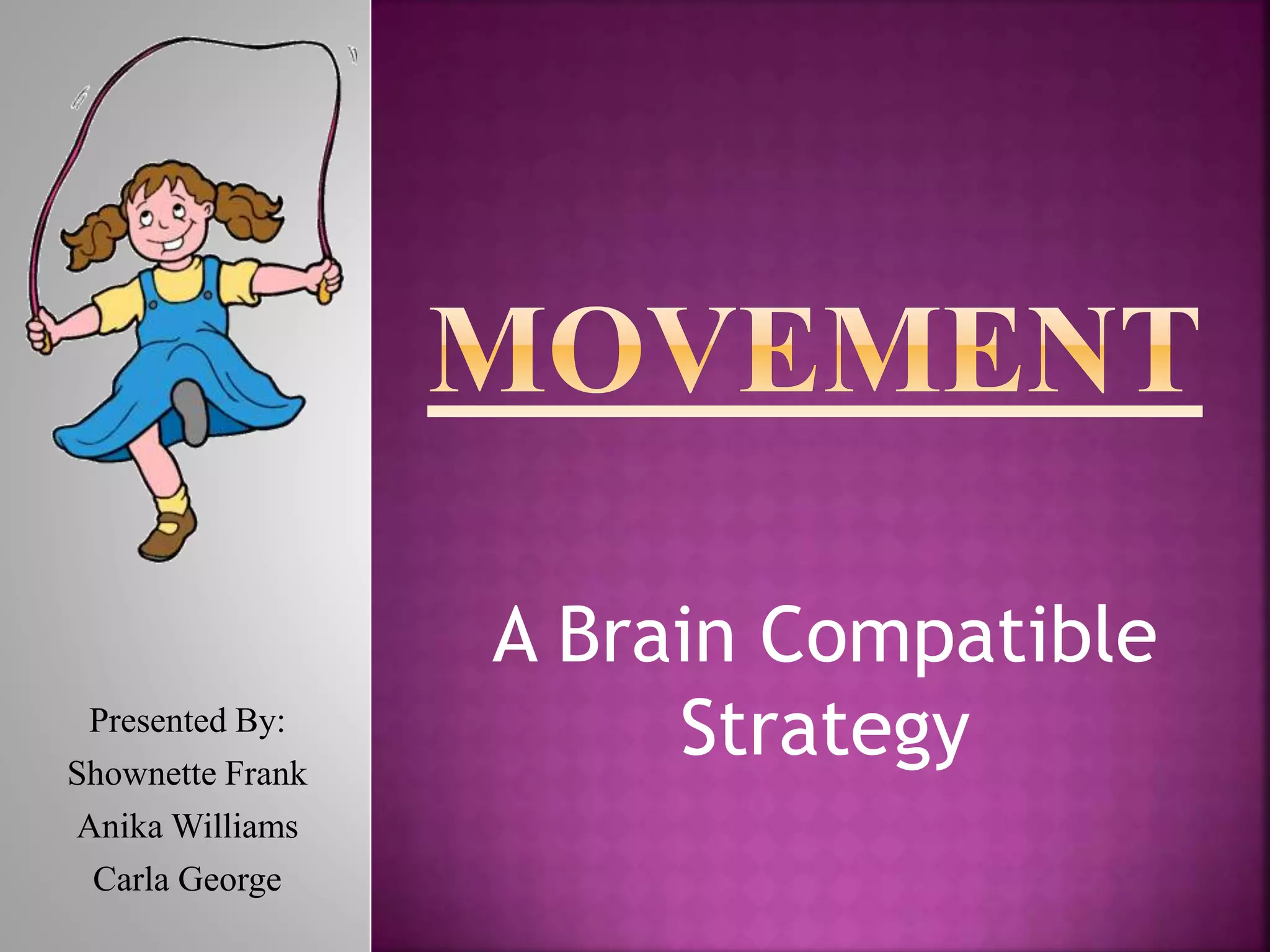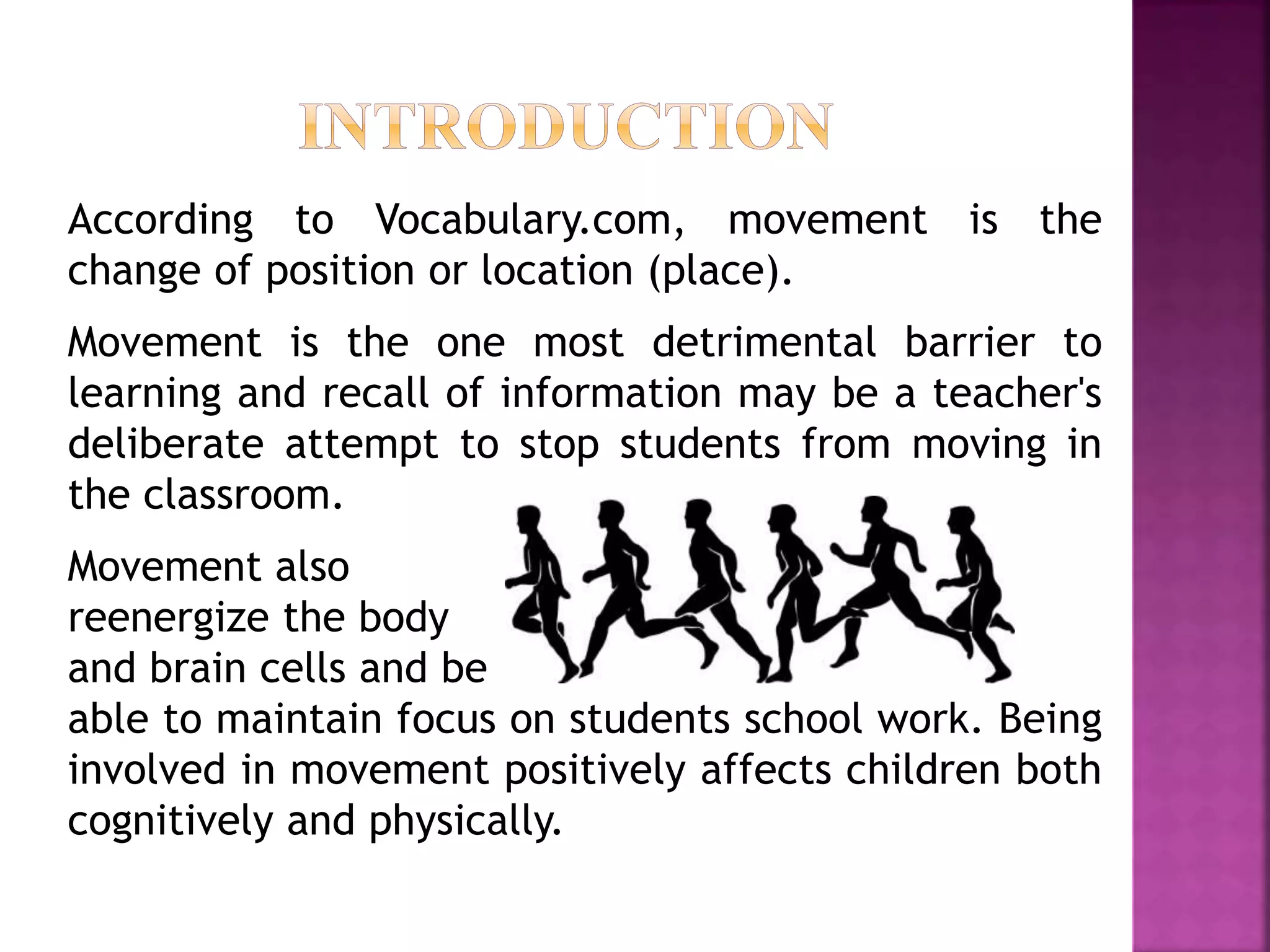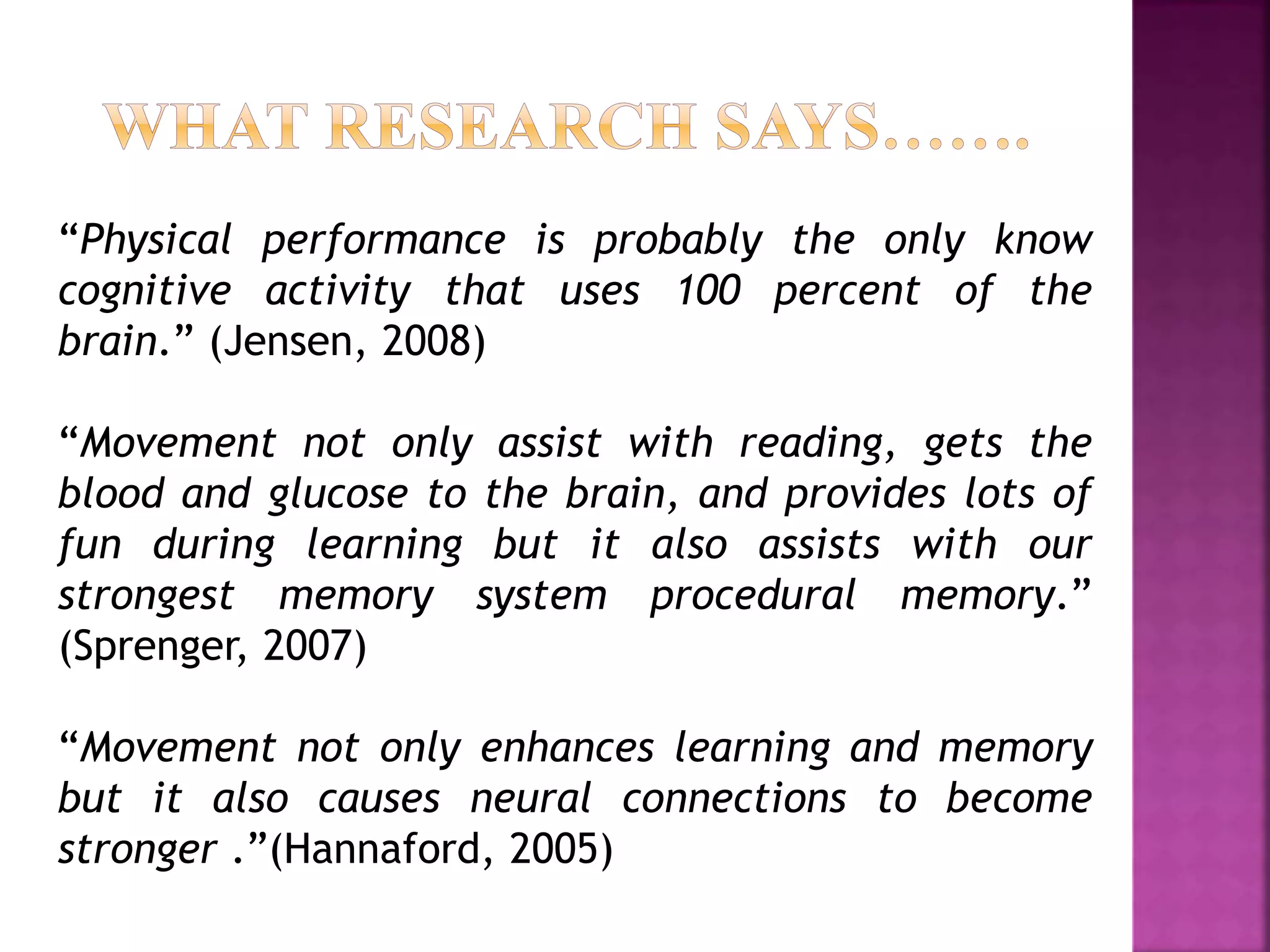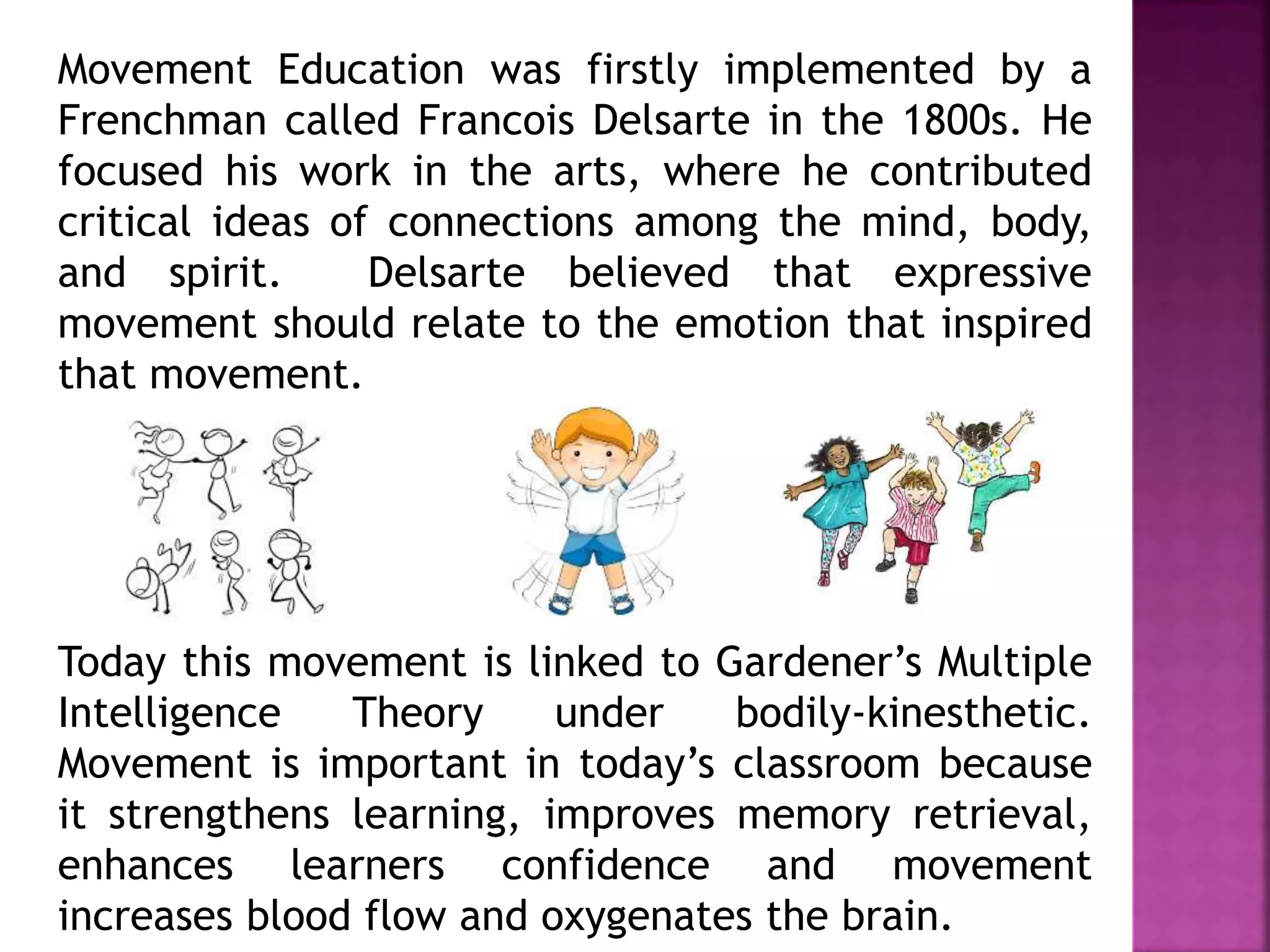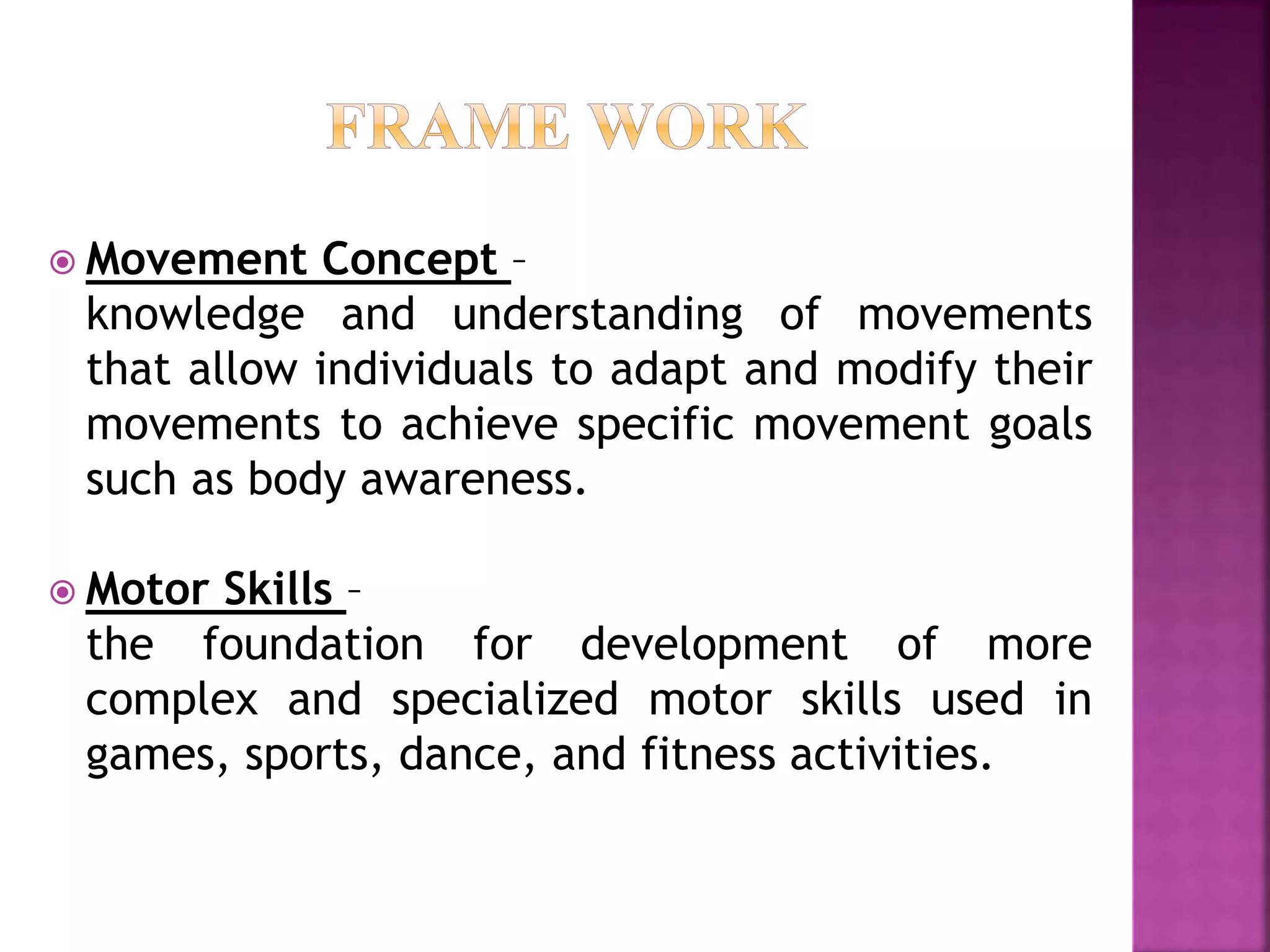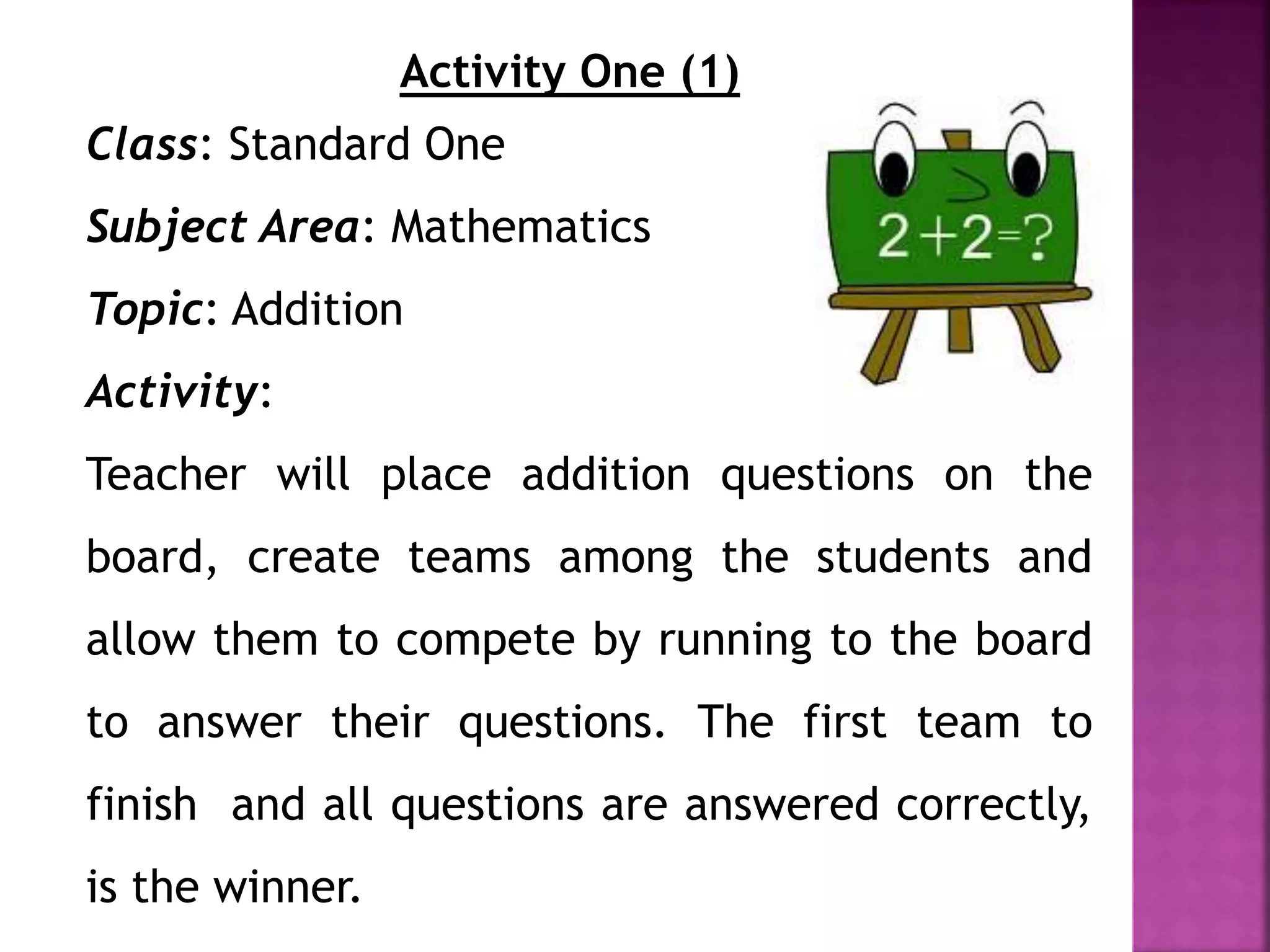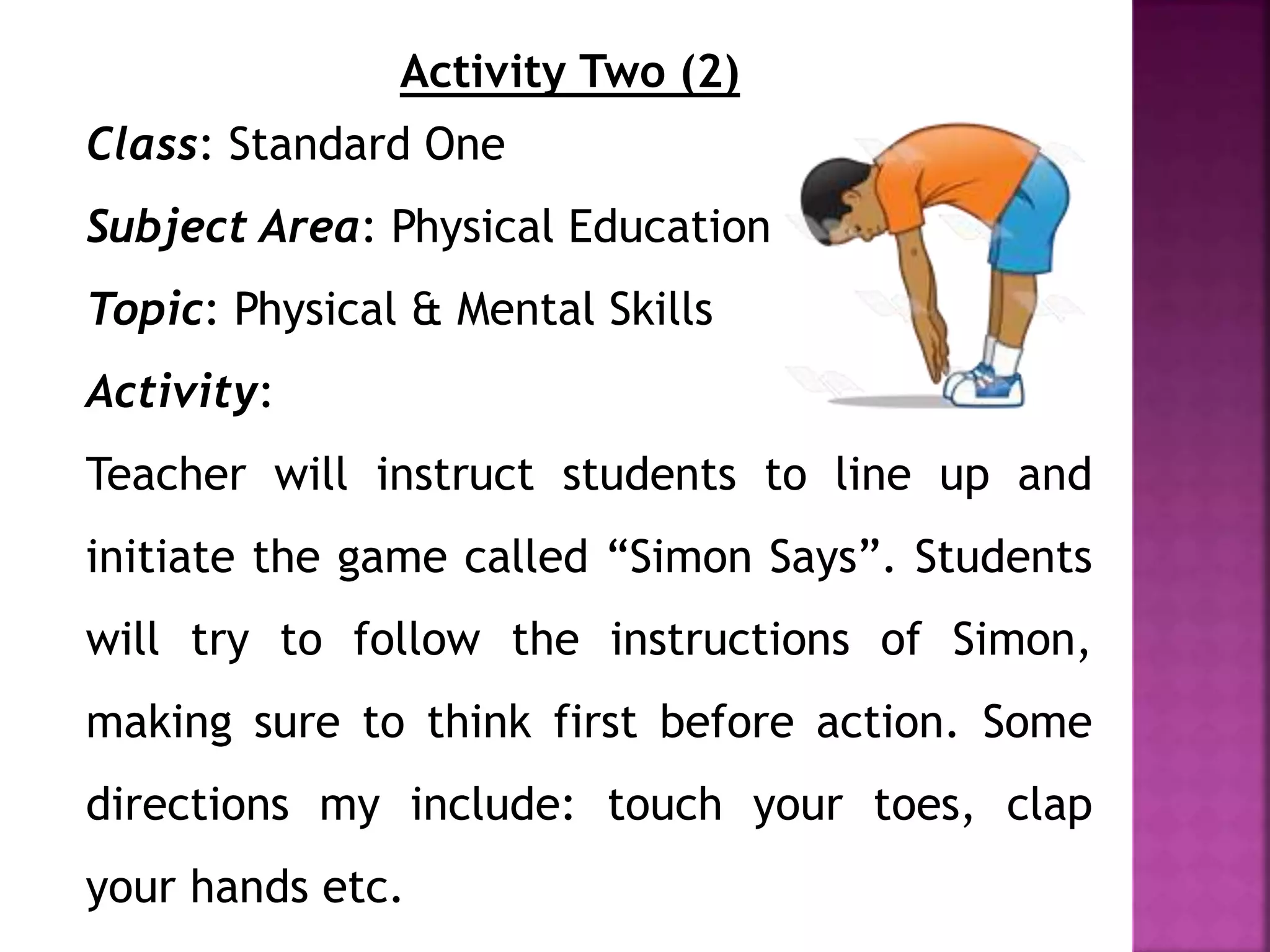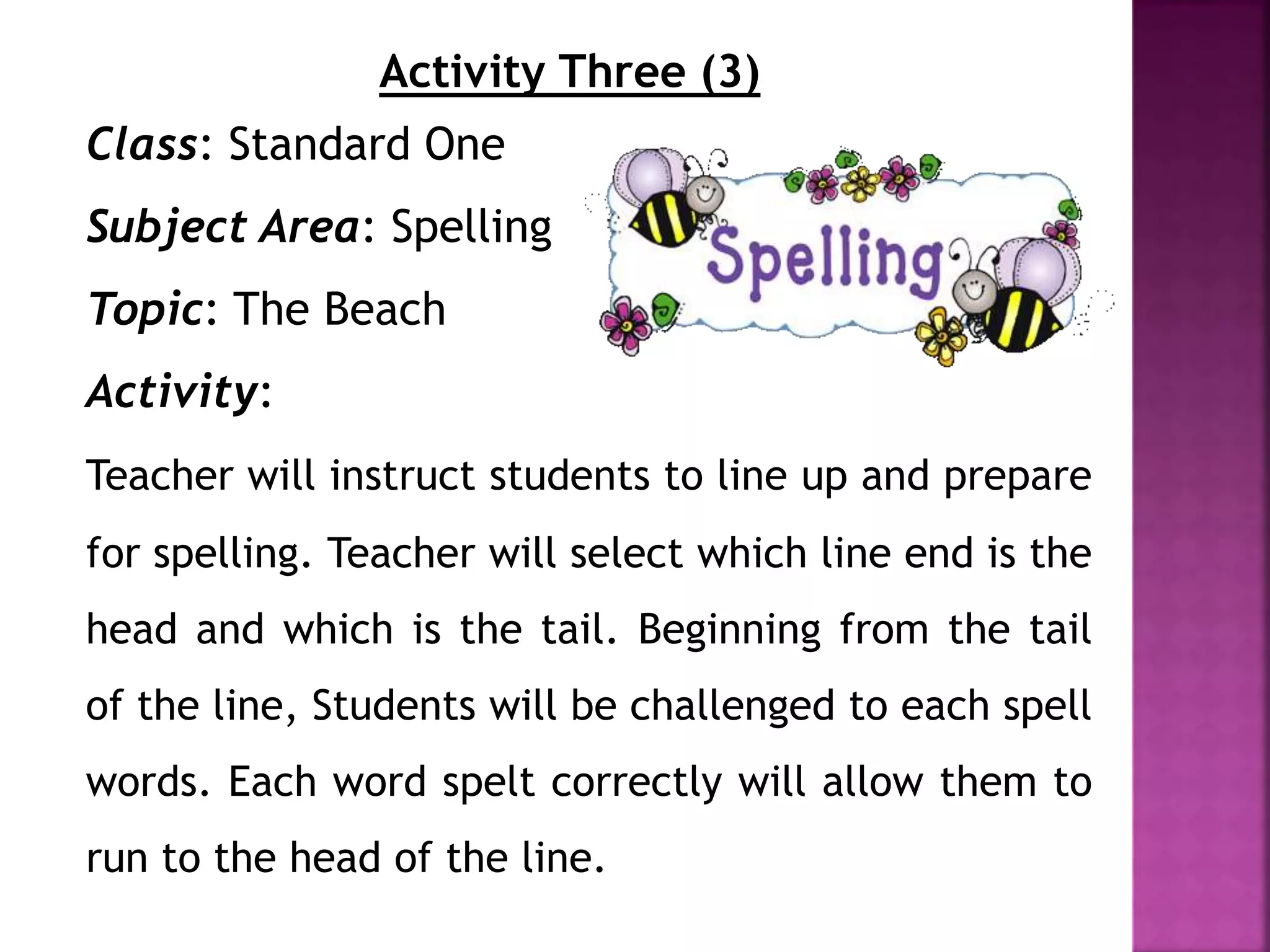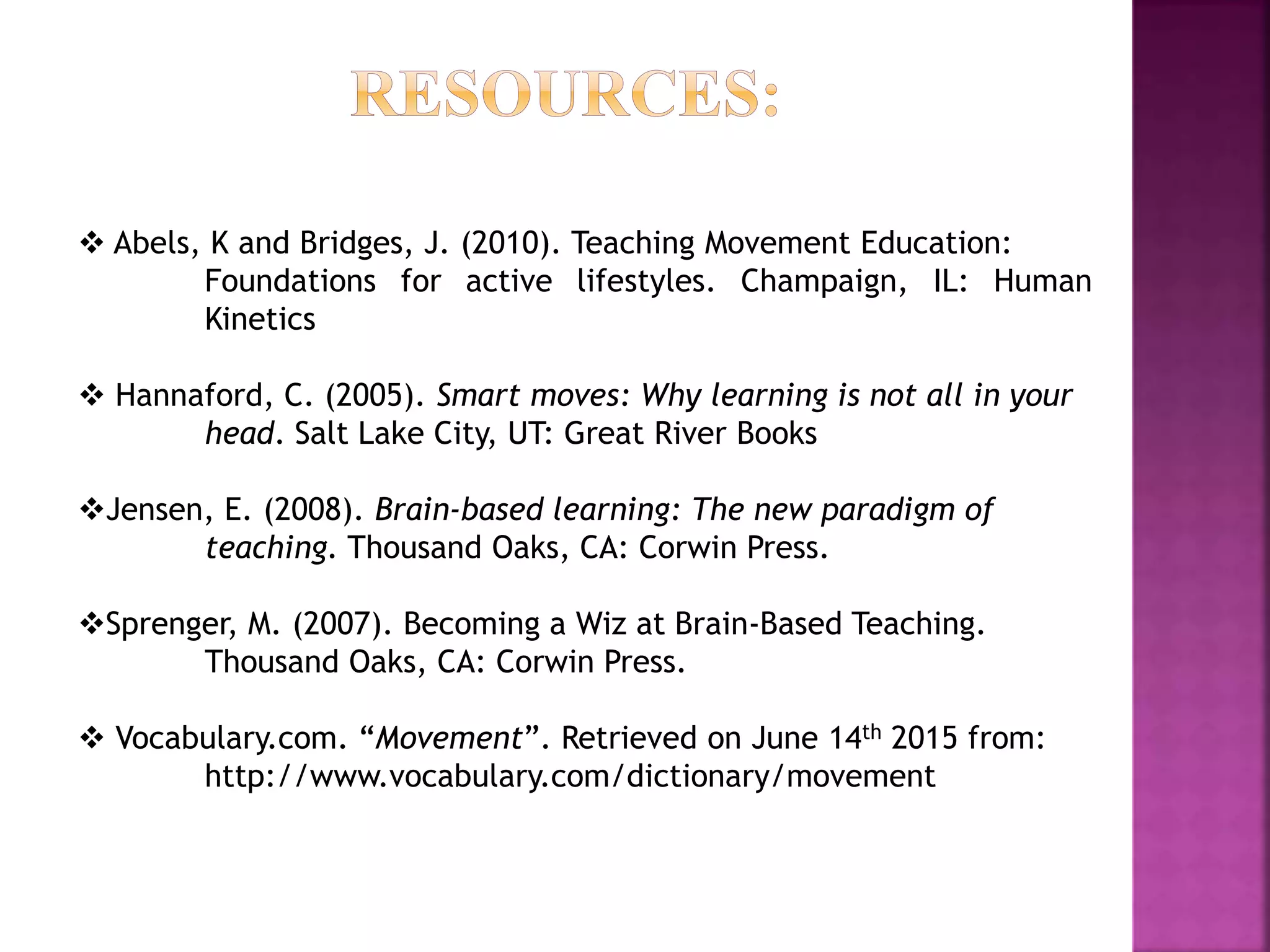The document discusses the importance of movement in the classroom for learning and memory. It provides background on how movement was first implemented in education in the 1800s, and how it relates to Gardner's theory of multiple intelligences. Movement is shown to strengthen learning, improve memory retrieval, and increase blood flow to the brain. Three example classroom activities are described that incorporate movement into lessons in math, physical education, and spelling to enhance learning in those subject areas.
